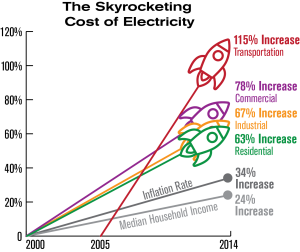Halide perovskites are a group of materials that have shown potential for elite execution and low creation costs in solar cells. The name “perovskite” comes from the moniker for their precious stone design, albeit different sorts of non-halide perovskites like oxides and nitrides are used in other energy advancements, like fuel cells and impetuses- Houston Energy Plans .
Perovskite solar cells have shown noteworthy advancement lately with quick expansions in productivity, from reports of around 3% in 2009 to more than 25% today. While perovskite solar cells have become exceptionally effective in an extremely brief time frame, various difficulties stay before they can become a competitive commercial innovation.
Research Bearings

SETO has distinguished four essential difficulties that should be at the same time addressed for perovskite advancements to find true success. Each challenge addresses a remarkable arrangement of obstructions and requires explicit specialized and commercial focuses to be accomplished. The workplace is supporting undertakings attempting to address these difficulties through a few subsidizing programs, remembering the SETO FY2021 Little Inventive Ventures for Solar (Tastes), SETO 2020 Photovoltaics, and SETO FY20 Perovskite financing programs, as well as the Perovskite Startup Prize.
Get familiar with SETO’s viewpoint on perovskites in our Energy Center article and our solicitation for data on execution targets.
Soundness AND Solidness
Perovskite solar cells have shown competitive power conversion efficiencies (PCE) with the potential for better execution, however, their solidness is restricted compared to driving photovoltaic (PV) advancements. Perovskites can decompose when they respond with dampness and oxygen or when they invest stretched-out energy presented to light, heat, or applied voltage. To increment steadiness, scientists are concentrating on debasement in both the perovskite material itself and the encompassing gadget layers. Further developed cell strength is basic for the advancement of commercial perovskite solar items.
Regardless of the huge advancement in understanding the soundness and corruption of perovskite solar cells, they are not currently commercially practical due to their restricted functional lifetimes. Commercial applications outside the power area might endure a more limited functional life, however, even these would require enhancements in elements like gadget solidness during capacity. For the standard solar power age, advances that can’t work for over twenty years are probably not going to succeed, paying little mind to different advantages.
Early perovskite gadgets debased quickly, becoming non-useful within minutes or hours. Presently, numerous examination bunches have shown lifetimes of a while of activity. For commercial, lattice-level power creation, SETO is focusing on a functional lifetime of somewhere around 20 years, and ideally over 30 years.
The perovskite PV innovative work community is centered around a functional lifetime. It is considering different ways to deal with comprehend and further develop security and debasement. Endeavors incorporate superior medicines to diminish the reactivity of the perovskite surface and elective materials. Definitions for perovskite materials, elective encompassing gadget layers, and electrical contacts. High-level embodiment materials, and approaches that relieve corruption sources during manufacture and activity.
One issue with surveying debasement in perovskites is creating consistent testing and approval strategies. Research bunches report execution results in light of profoundly fluctuated test conditions, including different embodiment draws near, air compositions, brightening, electrical predisposition, and different boundaries. While such different test conditions can give experiences and significant information, the absence of normalization makes it trying to straightforwardly compare results, and challenging to foresee field execution from test results.




